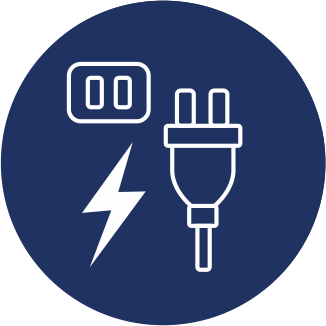
Brightways PSPINE™ switch fabric and HYPER SS™ switch engine innovations, underpin Brightways technological advancement in Cloud power and speed.
The HYPER SS™ switch engine is the central building block of Brightways UNITEDSA™ -1776 hyperscale switch. In a Cloud modular switch, multiple networking ASIC chips interwoven together form a very high-speed gigabit internal network called a switch fabric. In Brightways design, the switch fabric is the PSPINE™, and the HYPER SS™ switch engine forms the actuating routing component. The HYPER SS™ goes a step further than current market switch engines by integrating more line card functions into the ASIC. Through further integration, the HYPER SS™ avoids extra routing hops and ultimately reduces the work on each packet flowing through and thus the power dissipation, as well as speeds traversing the fabric.

Advancing Cloud Networking
There is an additional advancement in power and latency above and beyond what Brightways UnitedSA™-1776 brings itself by migrating from a ToR LAN networking architecture to a hyperscale switch architecture that winds up eliminating the sophisticated, costly layer of ToR switches plus fiber optic transceivers. The combination of Brightways PSPINE™ and HYPER SS™ not only advances hyperscale switches power and speed performance but also influences the outmoding of the widespread ToR configuration due to the ability to eliminate that costly, inefficient Cloud LAN layer.

Advancing Power & Speed
The advancement in speed and power migrating to a Cloud modular switch results in absorbing the extra networking layer of sophisticated switches plus accompanying fiber optics deployed in a ToR network configuration. The PSPINE™ develops the majority of the advancement ian power and speed, although the HYPER SS™ switch engine contributes quite a portion of the performance gain as well.
In conclusion, the combination of Brightways PSPINE™ switch fabric and HYPER SS™ switch engine advances the art and will additionally influence outmoding the widespread ToR configuration.
Please see the chart below to learn how much Brightways can help you save annually.
Warehouse sized data center with a standard layout (industry average)
of 185,000 square feet using 20 megawatts annually
Comparison of Hyperscale switch 10/25G line cards

Brightways
Power usage 3.6 Megawatts
Power costs $3.6 Million
Capex2 costs $5.4 Million

Competitor 1
Power usage 6 Megawatts
Power costs $6 Million
Capex costs $8.4 Million

Brightways Savings
Savings 2.4 megawatts
Savings $2.4 million
Savings $3.0 million

Electrical Consumption & Cost Savings
1. Competitor energy power consumption based on published information
2. Capex represents air conditioning, power backups and other “Cloud penalty” costs in support of hyperscale switch
Here are some of the benefit of the Brightways Hyper Switch

The energy required to service these data centers has also increased dramatically.

50% Reduction in power usage

While cloud computing is often perceived as clean, in truth it creates an enormous environmental burden.

50% Increase in data speed compared to industry leaders
We're here to help! Contact Brightways Co. for more information about our products, services, or partnership opportunities. Our team is ready to assist you with any inquiries.
Brightways Corporation | Copyright @ 2016 - 2025 | All rights reserved